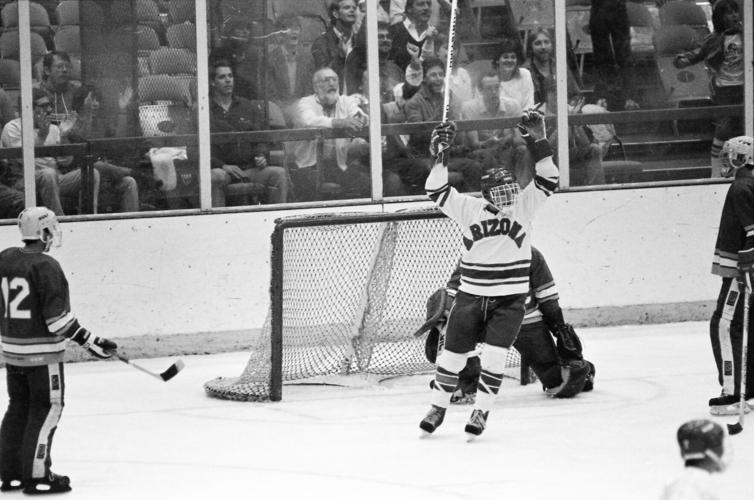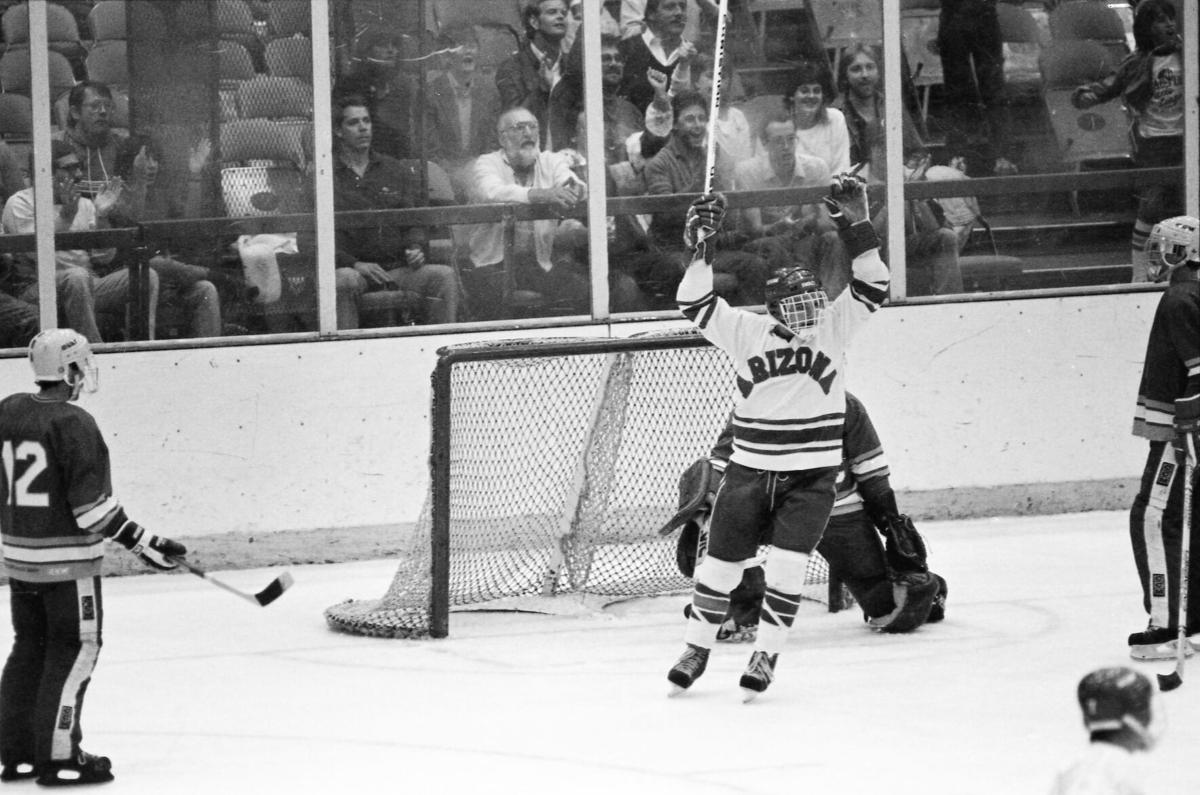After winning the national club hockey championship in 1985, the Arizona Icecats did something that took the NCAA another 35 years to accomplish: They announced they would pay each of their athletes $500 a semester toward enrollment expenses.
In retrospect, the Icecats of the ’80s were decades ahead of the NCAA’s Name, Image and Likeness legislation — a program so successful that the Chicago Tribune once sent a reporter to Tucson to write about Icecats coach Leo Golembiewski, a product of the Chicago youth hockey system.
On that night, the Icecats drew a sellout crowd of 6,222 and beat the University of Denver, a NCAA Division I hockey program.
Another night, prominent radio and TV talk-show host Larry King spoke at the Icecats’ year-end banquet — one that drew 800 people at a Tucson hotel. On another night, Detroit Red Wings Stanley Cup coach Scotty Bowman flew to Tucson to watch Golembiewski win his 400th game as Tucson’s club hockey coach.
Icecats home games were broadcast on 1400-AM radio. For a few years, Cox cable televised Icecats home games locally. Once, on pro-am day at the Tucson Open PGA Tour golf tournament, celebrity golfer Clint Eastwood stepped away from the first tee to shake hands with Golembiewski.

Arizona Icecats coach Leo Golembiewski runs a practice at the Iceland Skating Rink in 1981.
They posed for a photograph, with Eastwood’s arm around Coach G’s shoulder.
Times were so good that Golembiewski’s wife, Paula, won the first-ever Arizona Lottery.
Golembiewski was something of a one-man band from 1979-2011, a relentless promoter, recruiter and front man for a club hockey program. He won 634 games and was nominated for induction into the United States Hockey Hall of Fame in 2009.
Looking back, the highlight of Golembiewski’s career came in 1985 when the Icecats defeated Penn State 5-3 in a Chicago suburb to win the National Club Hockey championship. The ’85 Icecats finished 28-3-1.
A year earlier they finished No. 2, a season in which they had a memorable weekend against USC, selling out both games and drawing 22,692 fans in the first four games of the season at the Tucson Convention Center.
Perspective? On the night of Dec. 10, 1983, the Icecats drew 6,063 at the TCC. At the same time, Lute Olson’s first Arizona basketball team drew 6,087 at McKale Center.
But popularity for club hockey in Tucson, while strong for most of the Icecats’ 32 years, reached a ceiling. The thirst to do more — to become an NCAA Division I franchise — was never whetted.

Perhaps it was just bad timing.
In the mid-’80s, as the Icecats became national champions, Arizona’s athletic department was engulfed in a financial crisis. The UA football team, serving a three-year NCAA probation, was barred from playing in a bowl game and appearing on television. The basketball program had yet to become a national power and fill McKale Center.
When a move began to make the Icecats part of the UA athletic department, there was no money to make it happen. Athletic director Cedric Dempsey said he couldn’t consider adding a men’s sport because the school had recently eliminated wrestling and men’s gymnastics.
Dempsey said that until the athletic department could fully fund women’s basketball, swimming and gymnastics, the idea of absorbing the Icecats into the athletic department wasn’t going to happen.
In addition, there were only 39 men’s Division I hockey programs, and almost all were in the East and Midwest. Scheduling costs were prohibitive.

Leo Golembiewski, right, rubbed elbows with celebrities during his time as the Arizona Icecats’ coach. In 2005, he met famed actor Robert Loggia (in Icecats jersey).
That didn’t weaken Tucson’s support of the Icecats, who finished in the top four of the national club hockey finals in 1983, 1984, 1985, 1987, 1988, 1991, 1993, 1996 and 1997.
The Icecats’ success was more impressive given there was no suitable practice facility in Tucson. The club’s TCC ice was limited by (a) cost and (b) availability. The Icecats frequently bused to Phoenix to practice.
To make ends meet, Golembiewski — who moved to Tucson from the Chicago area in 1977 to teach at Salpointe Catholic High School — became the manager of Iceland Bowl, a hockey-rink/bowling alley on East Speedway Boulevard. By 2010, the UA’s sports and recreation program successfully pursued a club hockey team, which would provide more financial support and a stronger administrative network.
A quarter-century after the Icecats won the national championship, the nickname was changed from Icecats to Wildcats, and Golembiewski — the man who created the “Madhouse on Main Street” — walked away.









